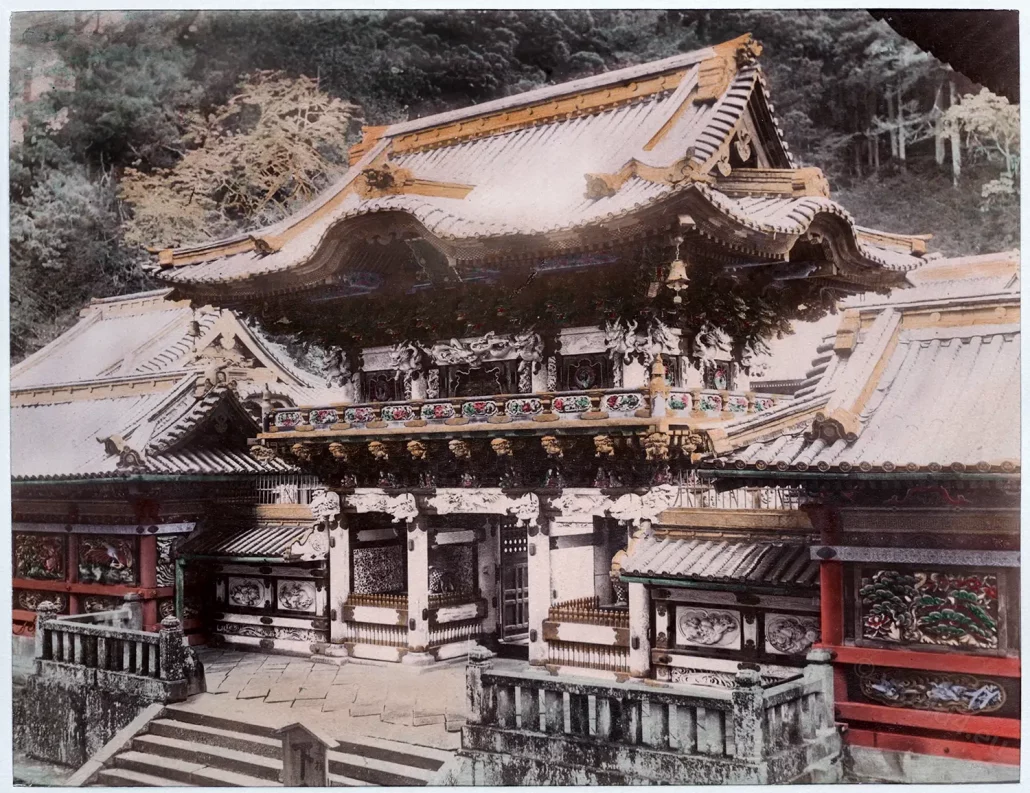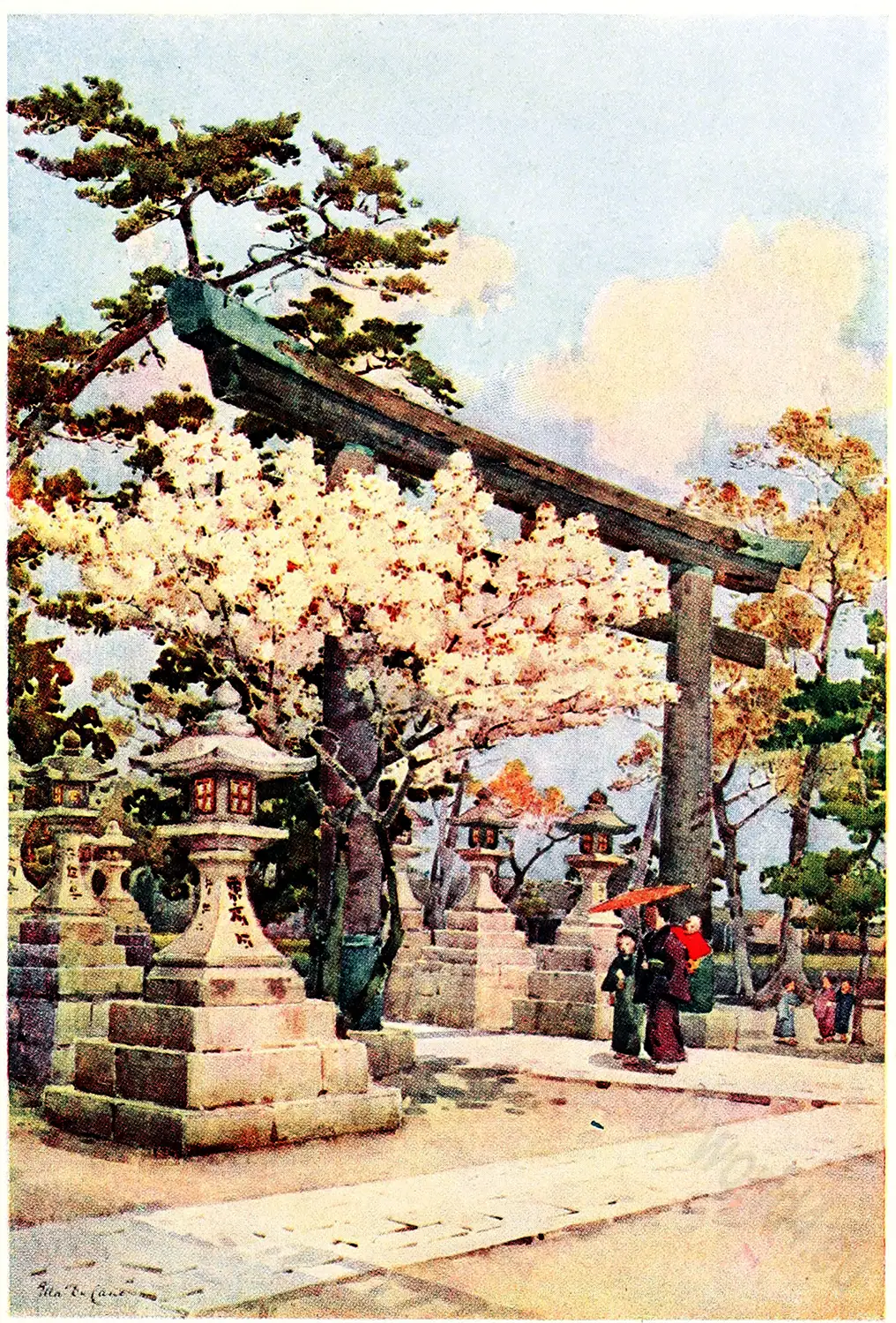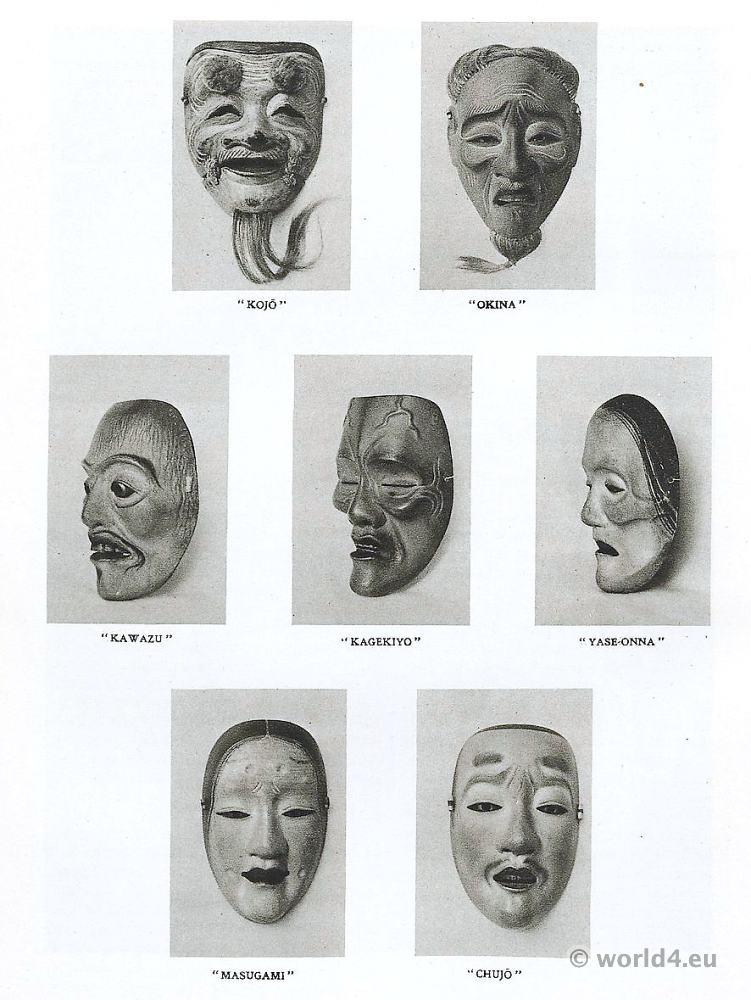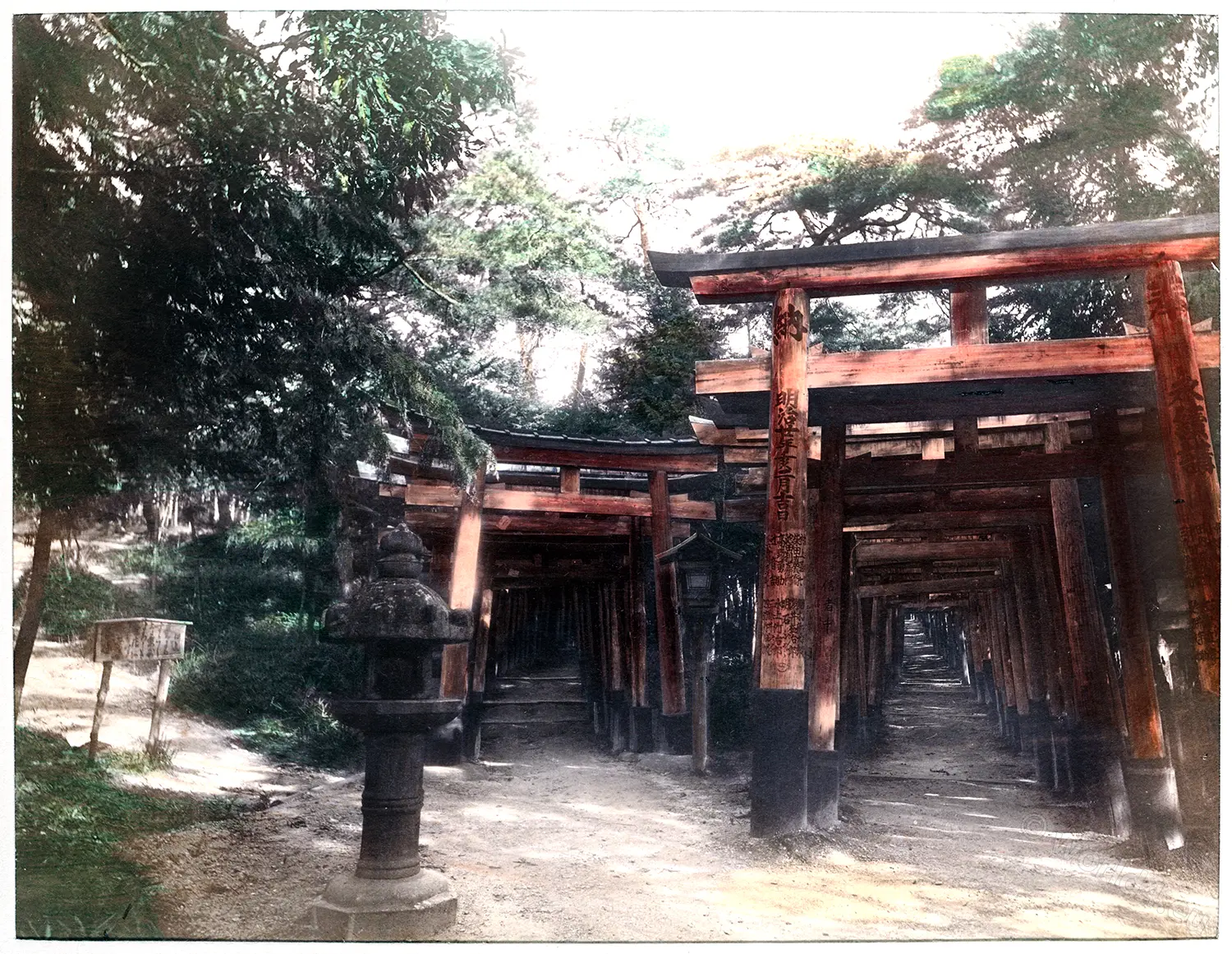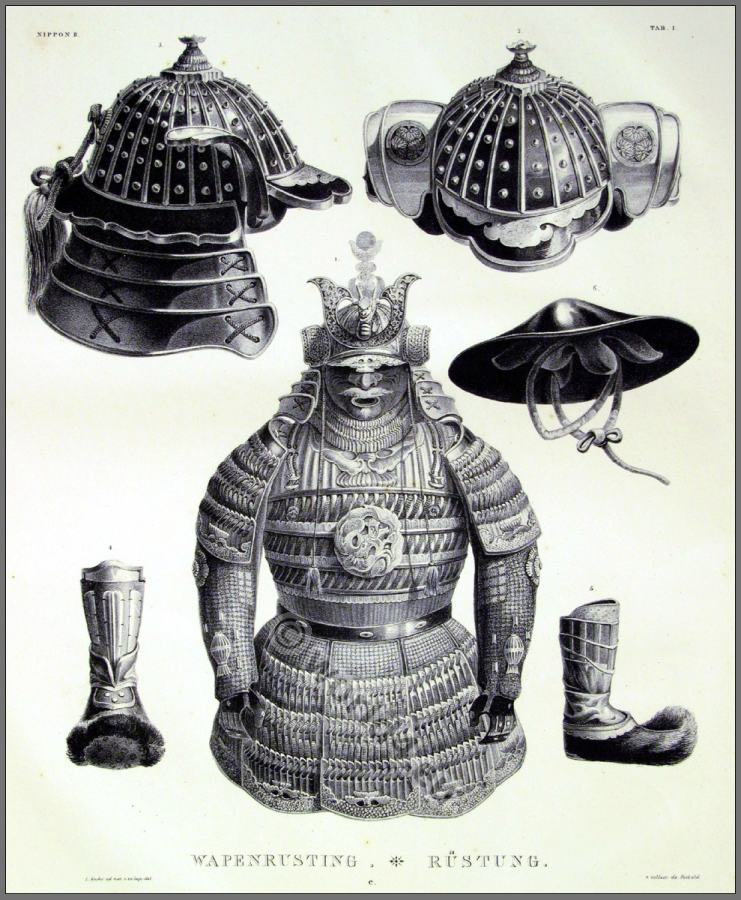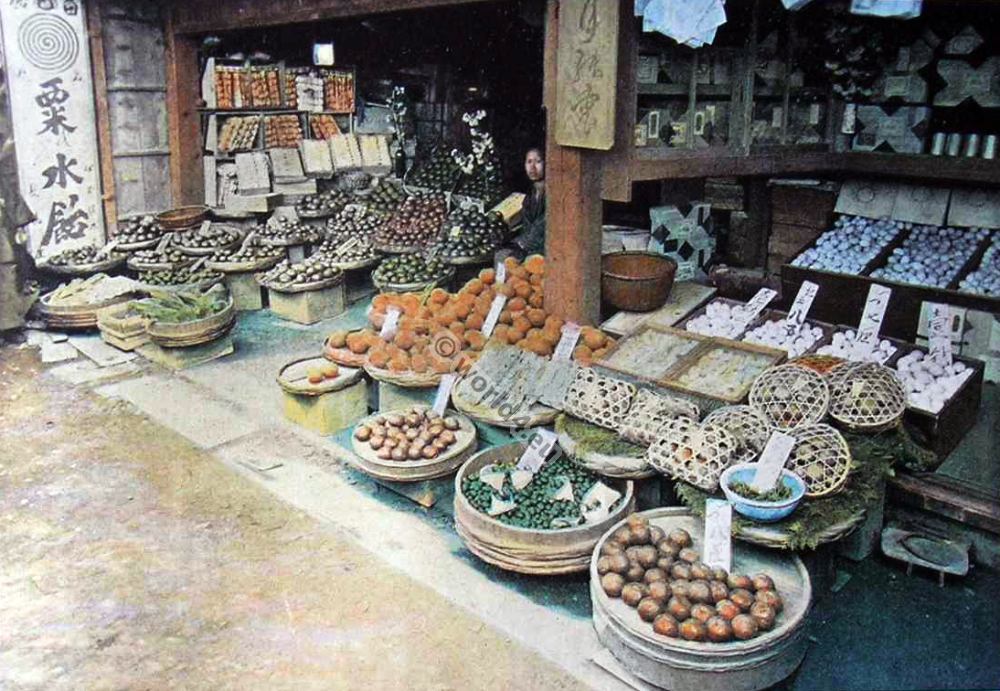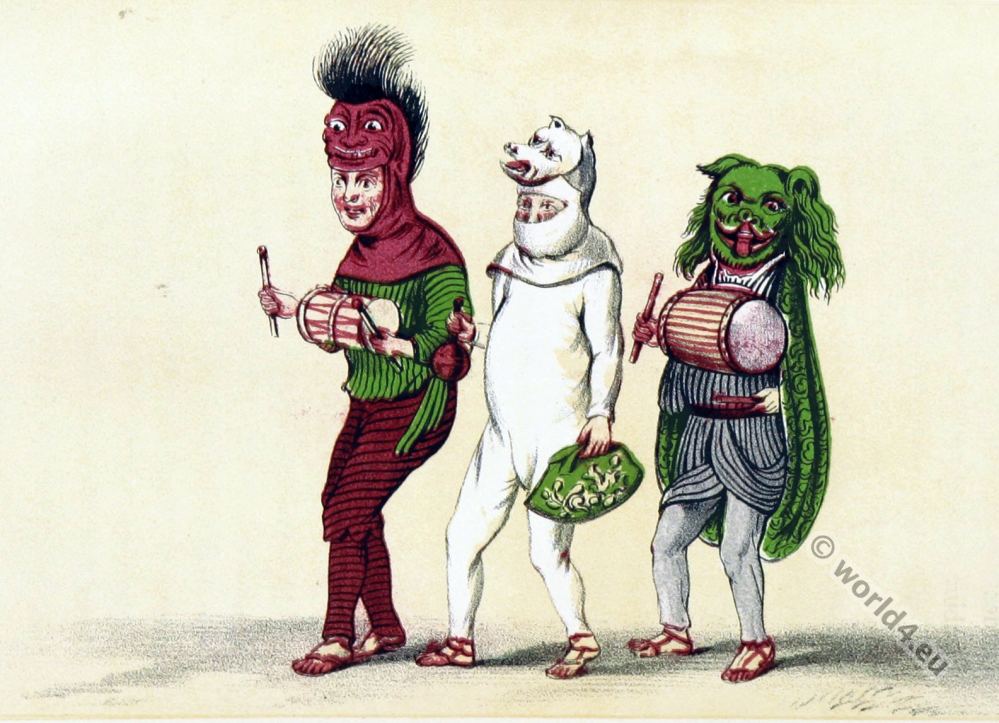Nikkō Tōshō-gū (jap. 日光東照宮) is a Shintō shrine in the Sannai district of the city of Nikkō in Tochigi Prefecture, Japan. It is dedicated to Tokugawa Ieyasu, the founder of the Tokugawa dynasty, and was built in 1617 when Ieyasu’s son Hidetada was shōgun. It was expanded by the third Shōgun, Tokugawa Iemitsu, including the main buildings of the current shrine. In 1999, it was designated a UNESCO World Heritage Site along with other shrines and temples in Nikkō. Ieyasu is worshipped at Nikkō Tōshō-gū, and his remains are also interred here. The shrine is the most famous of all Tōshō-gū in Japan.
YOMEI-MON AT NIKKO
by Francis Brinkley
This exquisitely beautiful structure called Yomei-mon is one of the gateways in the mausoleum of Ieyasu at Nikko, and is accounted the finest of its kind in all Japan. It is a mass of elaborate wood-carving gorgeously decorated in lacquer and gold, but the colors are so artistically blended that the general effect is in perfect taste.
The pattern on one of the pillars has been purposely carved upside down, owing to a superstitious notion that flawless perfection might excite the jealousy of Heaven and bring misfortune on the House of Tokugawa.
Francis Brinkley (30 December 1841 – 12 October 1912) was a British newspaper proprietor and publisher who served as a foreign adviser to Japan during the Meiji era. He lived in Japan for most of his life and was the author of several books on Japanese culture, art and architecture, as well as an English-Japanese dictionary. He is also known as Frank Brinkley or Captain Francis Brinkley, and was the great-uncle of Cyril Connolly.
WOOD CARVING IN YOMEI-MON AT NIKKO.
A rhyming Japanese proverb says: “Do not use the word magnificent until you have seen Nikko.” There are twenty-eight temples within the Mangwanji enclosure, each a masterpiece, elaborately decorated with wood-carvings.
The example here given shows a portion of the external frieze, or “ramma,” extending across the front of the Yomei-mon. Japanese wood-carving and painting on wood reached the zenith of their glory in the seventeenth century at the time these temples were built.
Source: JAPAN. Described and Illustrated by the Japanese. Written by Eminent Japanese Authorities and Scholars. Edited by Captain F Brinkley of Tokyo Japan. With an Essay on Japanese Art by Kakuzo Okakura Director of the Imperial Art School at Tokyo Japan. 1897.
Discover more from World4 Costume Culture History
Subscribe to get the latest posts sent to your email.

